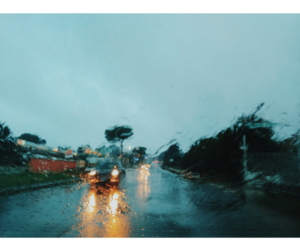A Flood Can Happen Anywhere. Is Your Bank Ready?
25% of all flood insurance claims come from moderate- to low-risk areas. This means you don’t have to be in a high-risk zone to be affected. Floods can cause serious damage. While a few inches of water doesn’t seem like much, it can knock you down. Flash floods often occur without warning in densely populated areas.
Keeping your employees safe during a flood requires preparation and readiness. Follow this guide to get them safely through a flood.
Common flooding hazards
Floods come on quickly. A narrow creek can rise from six inches to 10 feet in under an hour. Knowing your risk for flooding can assist with planning. Keep these hazards in mind:
- Heavy rain, ice, levy or dam failure, snowmelt, and debris jams contribute to flash floods.
- Rapid runoff occurs on steep, mountainous, or hilly terrain.
- Urban, rocky, or burn-scarred terrain floods faster because little water seeps into rocks, clay soil, concrete, or asphalt.
Preparing for a flood
You can implement these steps right now:
- Prepare personal protective equipment for workers, such as heavy-duty gloves and goggles.
- Make an evacuation plan and practice it regularly.
- Establish an emergency chain of command.
- Determine a way to track workers’ locations during the flood.
- Have food and water available for those employees who may have to stay at work during a flood.
Once you get a flood alert:
- Use FEMA tools to gather more information.
- Place important documents in waterproof boxes.
- Tell employees to keep their medications with them in case they become stuck at work.
During a flood
Take shelter during the flood. Stay up to date on flood warnings and advisories through your phone, radio, or TV. Tell your employees to:
- Stay away from bridges, basements, parking garages, and areas prone to flooding.
- Never drive, walk or swim through floodwaters.
- Avoid downed electrical lines.
- Turn off power at the main breaker if water nears the circuits.
- Practice proper form to avoid injury when lifting sandbags, which many people use to erect barriers to keep out water.
After a Flood Precautions
Flood hazards don’t end when the rain stops. Continue to take post-flood precautions such as:
- Ventilate work areas to prevent mold growth.
- Throw away mold-damaged materials and disinfect wet items with a bleach-water mixture.
- Employ goggles and gloves when handling anything that touched floodwaters.
- Guard against hearing damage by providing earplugs to employees located close to loud cleanup equipment such as blowers or chainsaws.
- Wear long pants and long sleeves when near standing flood water
- Move upwind of activities that generate concrete, brick, or stone dust in order to avoid breathing in crystalline silica.
- Stay out of buildings where flooding has caused extensive mold or structural weakness.
- Wash hands thoroughly with soap and water before eating, applying lip balm, smoking, or doing anything mouth-related.
- Decontaminate rain boots and gear exposed to floodwaters.
- Use gas-powered generators outdoors only in order to avoid carbon monoxide poisoning.
- Wear long pants and long sleeves when near standing floodwater, which can attract mosquitoes carrying West Nile Virus.
- Do not drive in emergencies until authorities say it’s safe.
#WorkCompWednesday Not currently an MBWCF member – click here to learn more about how to join!

